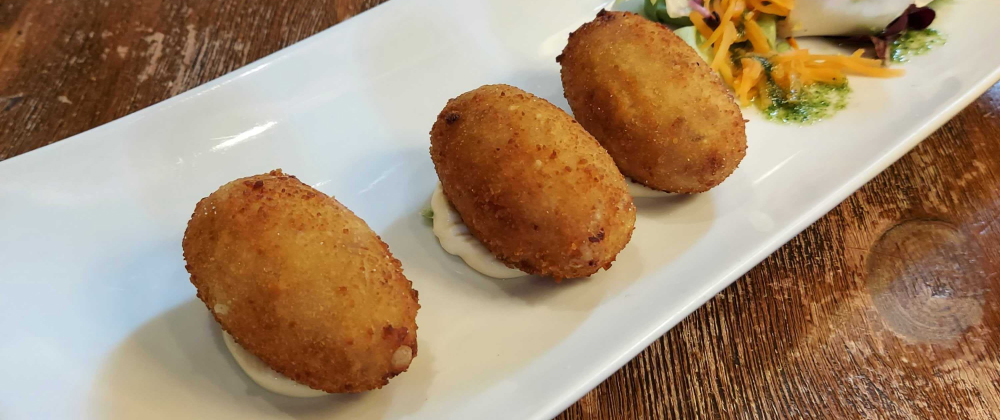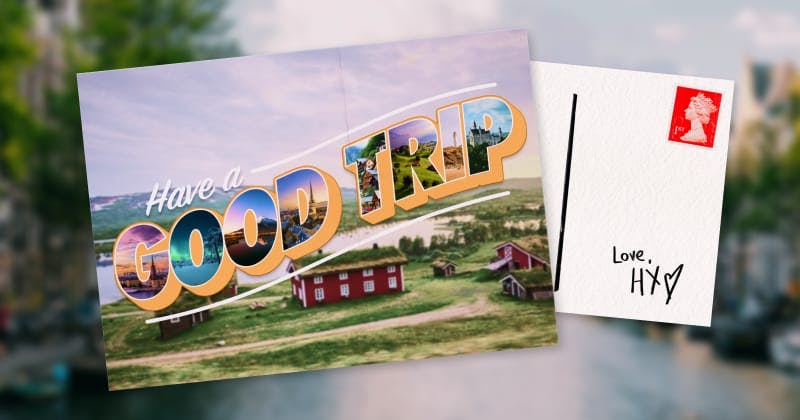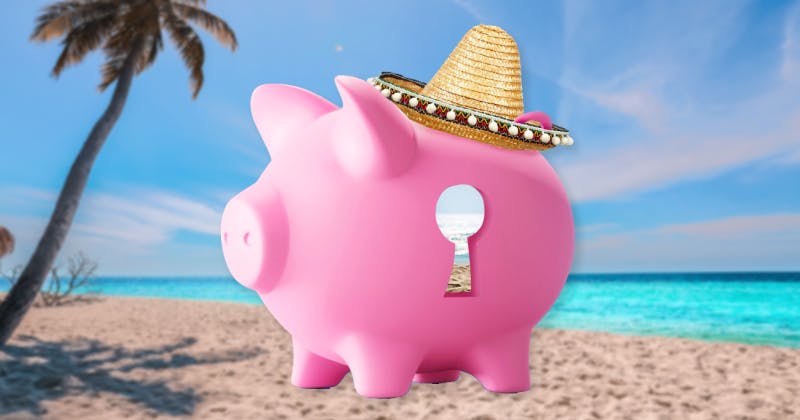
Seville Travel Guide
Seville captivates with its flamenco soul, historic Alcázar, and unique architecture amidst streets lined with fragrant orange trees. This city blends scorching summers with vibrant festivals and UNESCO sites, offering a rich tapestry of culture and history in every corner.
What you'll find in this guide:
Top things to do in Seville
Facts about Seville
Practical Information
Weather in Seville
When to visit
Getting there
Getting around Seville
Seville highlights
Where to stay in Seville
What to eat in Seville
Accessibility in Seville
LGTBQI+ travel in Seville
Sustainable tourism in Seville
Seville FAQs
GMT +1
Euro (EU)
Spanish
Type C and F
2hr 45
Some facts about Seville
Seville boasts over 300 sunny days a year, offering a warm welcome to visitors seeking to escape colder climates. This makes it an ideal destination for those looking to soak up the sun while exploring historic streets and beautiful gardens.
Seville's iconic orange trees are not just a beautiful sight but also hold significant cultural and historical value. The Moors introduced orange trees to Seville over a thousand years ago, and there are now more than 14,000 that line the streets.
Home to three UNESCO sites, including the breathtaking Catedral de Sevilla, the Royal Alcázar, and the Archivo de Indias, Seville promises a journey through time, appealing to history buffs and architecture lovers alike.
Practical Info
Culture and etiquette
Religion
The national religion is Roman Catholic, but many other religions are practised.
Tipping
For smaller orders like drinks and snacks, rounding up the bill is pretty common if you've enjoyed it. For fancier meals or dinner, a 10% tip is appreciated.
Smoking
Smoking is banned in enclosed public spaces including restaurants, bars and public transport.
Jabs, visas and other advice
For up-to-date advice on jabs, visas and other foreign advice, we recommend following the government's website.
Emergency numbers
For any emergency, call 112.
Language
The official language is Spanish, but you'll find that in the main tourist areas lots of people speak English too and menus are often translated. But the locals will appreciate you trying to speak Spanish.
Here are some helpful Spanish words and phrases:
Hello - HolaGoodbye - Adiós
How are you? - ¿Cómo estás?
Yes - Sí
No - No
What's your name? - ¿Cómo te llamas?
My name is - Mi nombre es
Please - Por favor
Thank you - Gracias
How much is it? - ¿Cuánto cuesta?
Where is? - ¿Donde esta?
One - Uno
Two - Dos
Three - Tres
Four - Cuatro
Five - Cinco
What's the weather like in Seville?
Summer tends to be hot and dry, with the temperature reaching more than 40°C in recent years. It's a good idea to wear light, breathable clothing to stay comfortable – but remember you'll need to cover up if you're visiting certain attractions like the Catedral de Sevilla.
In winter the weather stays fairly mild compared to the rest of Europe (and certainly the UK!) with temperatures around 16°C to 18°C. Mornings and evenings are a bit cooler, so take some layers.
When's the best time to visit Seville?
Seville makes for a great cultural city break at any time of the year but if you want to avoid the soaring temperatures of the summer, then spring (March to May) is a great time to visit the city. You will find it a little busier than in the summer months as others try to avoid the heat, but the weather will be milder and perfect for exploring. Spring is also the time of year when the orange blossom is out and the whole city has a beautiful floral fragrance.
Semana Santa (Holy Week) also happens in spring, and as a predominantly Catholic city, they celebrate with lots of events taking place in the build up to Easter Sunday – expect processions and floats laden with spring flowers.
Autumn is also a great time to beat the heat and the crowds. There's a little less going on which means it's quieter, but the weather is still warm for exploring all the parks and outdoor attractions the city has to offer.
Getting to Seville
The fastest and most convenient way to get to Seville is to fly. Flight times vary depending on where flying from, but you're looking at around 2 hours and 45 minutes from London. It's easy to arrange a transfer, or take an Uber from the airport into the city.
It's also possible to get the train to Seville – it takes longer but you'll see lots more on the way as you travel through France and the rest of the Spanish mainland. You'll most likely pick up a connection in Barcelona which is another fascinating city you might want to explore.
Getting around Seville
A lot of the main attractions in the city are within a short walk of each other and you'll find a lot of it is pedestrianised (just watch out for e-scooters!). By walking you'll soak up the city's vibrant atmosphere and also discover some hidden gems along the way.
For distances that little bit further, the city has a quick and convenient tram network with stops dotted around the major sights. There are buses too which are frequent, reliable, and an economical way to get around.
Top
Spain ranks 18th on the Good Trip Index
This score is calculated based on Sustainability, Human Rights, Women's Rights, Press Freedom, Quality of Life, LGBTQI+ Rights and Animal welfare
Find out moreSeville highlights
Catedral de Sevilla
Seville's vast cathedral is the third-largest cathedral in the world and the world's largest gothic cathedral. Building started in 1401, and took over a century to complete, and in 1987 it was registered as a UNESCO World Heritage Site. With 80 chapels, impressive gothic and renaissance architecture and famous paintings, it's worth spending a couple of hours taking it all in. Don't miss the gold altarpiece, the Retablo Mayor and look out for the tomb of controversial 15th-century explorer Christopher Columbus, who had strong ties with Seville.

La Giralda
The Giralda tower is part of the cathedral, but a totally optional part of your visit. It's had a long and varied history, but now serves as a bell tower. If you're feeling fit, climb the 35 winding ramps up 300 feet to the top for beautiful panoramic views of the city.

Royal Alcázar of Seville
Also a UNESCO World Heritage Site, this palace was originally built as a Moorish fort, but has been transformed over centuries by various Christian monarchs into the monument you see today. It's the oldest royal palace in Europe still in use and one of the best examples of mudéjar architecture in Spain. The gardens are beautiful and peaceful, so take a picnic with you and make an afternoon of it.
As well as being a royal palace, the Alcázar has also been used in TV and film so you might recognise it from Lawrence of Arabia, or more recently, as the Water Gardens of Dorne in HBO's Game of Thrones.

Flamenco
Seville is one of the best places to see flamenco live, especially in the Triana area, where you can feel the real spirit of the art form. You'll find 'tablaos' or flamenco venues all over the city and every two years the city holds its Biennial of Flamenco.

Parque de María Luisa and Plaza de España
An oasis in the heart of Seville, the Parque de María Luisa is a public park that stretches alongside the Guadalquivir River. Another great place for a picnic, its gardens, ponds, and fountains are ideal for leisurely strolls and also serve as somewhere to escape the midday heat.
The Plaza de España is one of the most recognisable parts of the city. Inside Parque de María Luisa, it was built in 1928 for the Ibero-American Exposition of 1929. One of the plaza's most distinctive features is its 48 alcoves, each representing a different province of Spain. The alcoves are adorned with colourful azulejos (ceramic tiles) that depict historical scenes from each area.

Setas de Sevilla
Translated as the Mushrooms of Seville, the Setas de Sevilla is claimed to be the world's largest wooden structure. It houses an archaeological museum, food market, plaza, bars and restaurants, and a panoramic terrace. The viewing platform at the top is open from 9.30am to 12.30am, so you can enjoy the city views by day or night.

Explore Andalusia
As much as there is to do in Seville itself, it's worth exploring some of its neighbouring cities like Córdoba or Cádiz. The train network across this part of Spain is pretty good, so you'll be there and back in a day without any trouble.
 Top
TopWhere to stay in Seville
Centro (City Center)
The heart of the city. If it's your first time in Seville, consider staying in Centro where you'll be within walking distance of most major attractions and a short hop on public transport from everything else.

Santa Cruz
Seville's old Jewish quarter and probably the most Instagram-able area of the city. Here you'll find narrow streets, whitewashed houses and hidden plazas packed with history. The Archivo de Indias and the Royal Alcázar of Seville are in Santa Cruz.

El Arenal
Between the city centre and the Guadalquivir River this area is great for nightlife, tapas bars, restaurants and theatres. It's also home to the famous Maestranza bullring.

Triana
On the other side of the river, Triana has a more local feel to it. Famous for its flamenco culture, ceramic workshops, and lively market you'll find authentic Seville here.
 Top
TopWhat to eat in Seville
Seville has a rich culinary landscape rooted in Andalusian traditions, with a wide array of dishes and ingredients influenced by the city's historical blend of cultures.
You can't go to Spain without eating tapas classics like croquetas or patatas bravas. But this region of Spain is famous for its Ibérico pork which is usually grilled or roasted and delicious.

Another popular Sevillian dish is solomillo al whisky – pork tenderloin marinated and cooked in a sauce made from whiskey, garlic, olive oil, and lemon juice.
And we can't talk about Seville without mentioning its famous oranges. Seville oranges have a more bitter taste and you'll often find them in the UK in the form of marmalade. Streets all over the city are lined with orange trees, but instead of being harvested they're largely ornamental.

Accessibility in Seville
The city has made efforts to improve the accessibility of its paths, crossings, and public areas, including lowering curbs and installing tactile paving. However, some older parts of the city have cobblestone streets and narrow paths which may still pose a challenge if you're using a wheelchair or have other mobility issues.
Public transport throughout the city is adapted for wheelchair users, and so are most attractions and museums, however because of the historical nature of the older buildings, some areas might not be accessible.
As always, it's best to check before you go if there's something you're particularly interested in visiting.
Seville for LGBTQI+ travellers
Spain, as a whole, is one of the most LGBTQI+ friendly countries in the world, with strong legal protections and societal acceptance, and Seville is no exception.
There's a vibrant LGBTQI+ scene, with numerous bars, clubs, and cafés catering to the community, particularly around the Alameda de Hércules area. The city has an annual pride event too with a parade, concerts, and various other activities showcasing the city's supportive atmosphere.
Sustainable tourism in Seville
Seville is stepping up its game in sustainable tourism by encouraging biking and walking, preserving its historical sites, and promoting green hotels and local food. The city is educating both visitors and locals on how to take care of their environment and cultural heritage. This way, Seville aims to be a great place to visit and a better place to live, ensuring it stays beautiful for everyone in the future.
TopSeville FAQs
Is Seville worth visiting?
Absolutely! Seville is a city that offers visitors a rich tapestry of cultural experiences. You can wander through the lively Triana neighbourhood, dive into the city's famous festivals, and even catch some authentic flamenco dancing. With great weather, tasty food, and streets lined with orange trees, Seville is a spot you won't forget.
What is Seville best known for?
Seville is famous for its rich cultural heritage and architectural marvels. It's home to the jaw-dropping Alcázar palace, the huge and historic Seville Cathedral, and the Giralda tower with its amazing views. It's also the heart of flamenco dancing, where you can catch live performances all over the city. Don't forget about the yummy tapas, festivals like La Feria de Abril, and those picture-perfect streets filled with orange trees.
Is Seville expensive?
Seville has lots of different experiences for a range of budgets, making it accessible for many travellers. While it does have its share of luxury options, there are plenty of ways to enjoy the city without breaking the bank. You can enjoy its famous attractions, like the charming streets filled with orange trees or flamenco shows in a local bar, for little to no cost.
How many days do you need in Seville?
To truly soak up the magic of Seville and explore its main attractions without rushing, a stay of 3 to 4 days is ideal. You'll have time to visit the jaw-dropping Alcázar palace, the historic Seville Cathedral and the Giralda tower, and still have moments to wander through the city's picturesque streets and enjoy delicious tapas.
Top
























